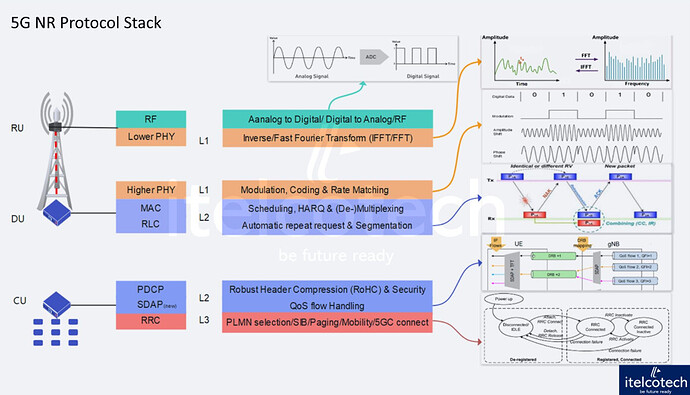In contrast to previous technology generations, where the baseband unit (BBU) handled all protocol layers and functionalities, 5G has introduced a more evolved approach by splitting the BBU into two components: the Distributed Unit (DU) and the Central Unit (CU).
This separation allows for greater flexibility, paving the way for virtualization and cloudification of network functions, a shift toward an open Radio Access Network (O-RAN).
In traditional networks, the baseband unit managed all layers and functionalities. However, in 5G, real-time functionalities are handled by the DU, while other functionalities are managed by the CU.
Here’s a quick breakdown:
-
Radio Unit (RU): Manages the conversion between analog and digital signals. It handles the signals coming from the antenna (electrical signals), converting them from analog to digital, and vice versa for outgoing data. Additionally, it performs time-to-frequency and frequency-to-time domain conversions.
-
Distributed Unit (DU): Responsible for real-time processing. It takes care of the higher physical layer, handling tasks such as modulation, coding, rate matching, and scheduling. The Medium Access Control (MAC) layer, which allocates resources and manages scheduling, is also handled by the DU. The Radio Link Control (RLC) layer, specifically the Automatic Repeat Request (ARQ) for resending data, is also managed here.
-
Central Unit (CU): A key protocol introduced in 5G is the Service Data Adaptation Protocol (SDAP), which handles flow management for end-to-end Quality of Service (QoS). The CU also manages communication with the core network via the Radio Resource Control (RRC) protocol.
LinkedIn: ![]()
